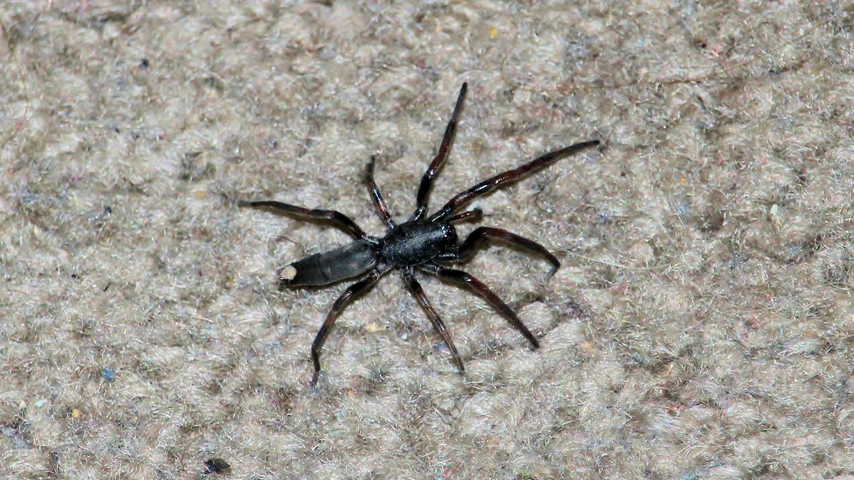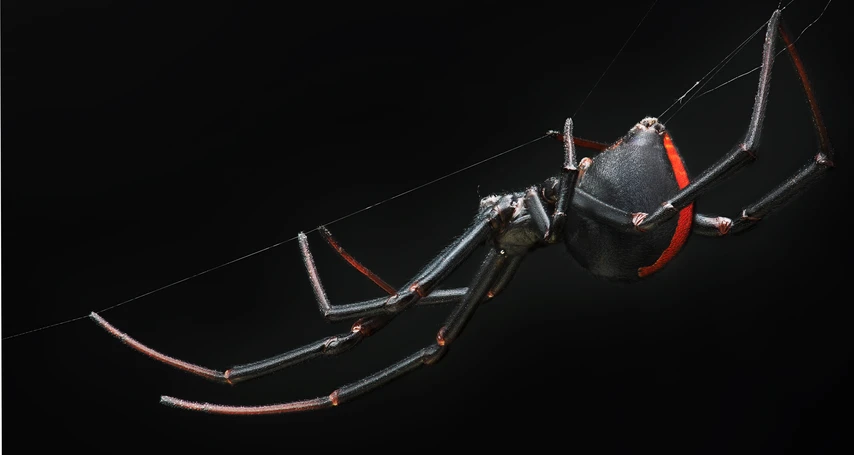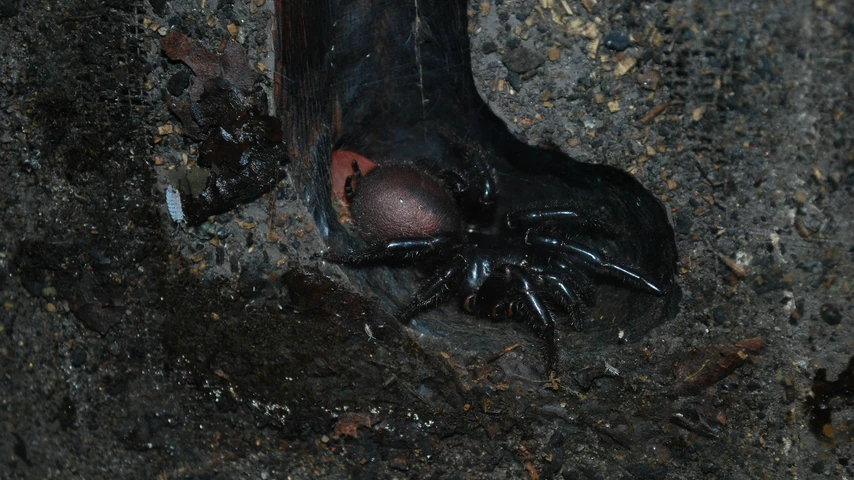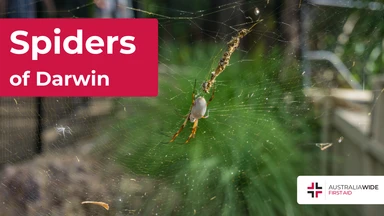A Guide to Adelaide Spiders


Just like humans, spiders don’t like being out in the rain.
So with the recent wet weather in Adelaide, spiders are increasingly seeking shelter indoors. You might have noticed an uptake of small dark brown to black spiders and their webs skirting wall corners or window frames.
Thankfully, most common house spiders are timid, shy and seldom kill people in Australia. In saying that, some spiders carry potentially deadly venom, so it's important to know how to treat different spider bites.
Read on for detailed information about spiders common to Adelaide homes and backyards, and how to identify and treat their bites.
We also cover spider bites in the following Adelaide first aid courses:
Click the relevant link to book now!

The White tail spider is a common spider species found in and around Adelaide. While the White tail spider bite has a notorious online reputation for causing necrosis, it is in fact, far less poisonous than Redbacks and Funnel-webs.
White tail spiders are usually the size of a 20 cent coin, with a dark reddish to grey elongated, sleek body and two little white circles at the rear of their abdomen.
The White tail spider is not the human flesh-eating monster described in headlines, but a shy spider that vagrantly hunts insects and other spiders at night. As they feed on Redback spiders, having one around your home may not be such a terrible thing (although it might tell you something about the other resident arachnids).
White tail spiders don’t make webs, so you’ll have to sight them to know if they live in your home.
Give clothes an extra shake before putting them on as White tail spiders love hiding in clothes. Most bites happen when humans put on the clothes the White tail is taking shelter in. Apart from clothes, they live and hunt around the nooks and crannies of your home and usually only come out at night.
The White tail spider is relatively harmless to humans. Their venom is among the weakest of Australian household spiders. A White tail spider bite can result in mild symptoms that are similar to those of a bee sting and usually last for 24 hours. More information about the symptoms of a White tail spider bite can be found in our Resource Library.

One spider found in and around Adelaide homes and gardens is the deservedly notorious and toxic Redback.
The female Redback is black in colour with a distinctive red or orange stripe on the top of the abdomen. Female redbacks carry a venom that acts directly on the nerves and can cause serious illness and even death if not treated promptly.
The male Redback is smaller, light brown in colour with white or yellow markings on the abdomen. Male Redback fangs are too small to pierce human skin, making them relatively harmless.
Due to their predilection for dry, sheltered sites, redback spiders tend to build their nests close to human habitation in sheds, toilets, and under rocks and junk piles. Their nests typically comprise a funnel-like upper retreat area surrounded by sticky catching threads.
More than 250 victims of redback spider bites receive antivenom each year. An antivenom was developed in 1955, and since then, there have been no recorded deaths in Australia.
Usually bites occur when a hand or a foot comes in direct contact with a female redback or her web. Seek immediate medical attention if you believe you have been bitten by a redback. Try to take a photo, rather than capturing or killing the spider for identification.
Redback spider bites are characterised by intense localised pain, redness, and swelling around the bite site. Other common symptoms of a Redback spider bite can be found in our Resource Library.
We run certified First Aid courses throughout all major Australia citys. Find a location near you.

The Black house spider is small (9-18mm) and shy with a dark brown to black body and is very common in Adelaide homes. It is also known as the Black spider or the Window spider. This spider species is native to Australia and commonly lives outside on rough-barked trees.
When it rains, or their habitat has been disturbed, Black house spiders adapt and can be found in corners of walls, window frames and doorways. Black house spiders prefer to live in locations where light sources are present, as these attract smaller insects.
Black house spider webs are funnel-shaped with crescent web entrances. They also embed bark and other detritus into the silk to act as a disguise. These spiders are usually not aggressive and are great at controlling insect populations.
While these spiders are venomous, their shy and timid nature means they are rarely a threat to humans.
Despite their shy nature, black house spiders can deliver excruciating bites, the symptoms for which can be found in our Resource Library.

Funnel-web spiders have a highly toxic and fast-acting venom that makes them one of the most deadly spiders in the world. Commonly known to inhabit the eastern coast of Australia, they are also found in backyard, parks and bushland surrounding Adelaide.
Funnel-web spiders dwell in the ground and build funnel-shaped webs that act as burrows and a trap for potential prey. Funnel-webs lunge out when passing prey, such as insects, lizards or frogs, encounter their funnel-shaped abode. There are at least 40 species of Funnel-web spiders native to Australia.
Here are some identifiers that are typical of the funnel-web spider:
Funnel-webs having been responsible for 13 total deaths and many serious bites. Their highly toxic and fast-acting venom can result in a host of distressing symptoms and kill a full-grown human adult in roughly 15 minutes
First Aid for the spider bites described here can be found in our article on identifying and treating bites from some of Australia's deadliest spiders.
And to avoid spider bites, you should always contact a professional spider control company to relocate any dangerous arachnids calling your home, home.
White tail spiders, Black house spiders, Redbacks, and Funnel-webs are common around Adelaide and are usually shy, timid and stick to themselves. In prolonged periods of rain, they may look for shelter in your home. It is important to be aware of your resident arachnids to avoid any nasty bites or encounters.
As the Redback and Funnel-web are both some of the most venomous spiders in the world, learning first aid in the event of a bite, and being able to recognise an allergic reaction, can be the difference between life and death. It’s wise to assume any spider bite is venomous.
Make sure to attend one of our Adelaide first aid courses to learn more about treating bites from some of Adelaide's most common spider species.

March 11, 2025
Darwin, the tropical capital of Australia’s Northern Territory, is home to a rich diversity of wildlife - including an impressive array of spiders. From the sprawling webs of golden orb-weavers to the cryptic camouflage of trapdoor spiders, these arachnids play a vital role in the local ecosystem. While some may inspire fear, the majority are harmless and even beneficial, helping to control insect populations.

September 4, 2024
Cat bites, while often underestimated, can lead to serious health complications if not treated promptly and properly. Cats' mouths harbour a variety of bacteria that can cause infections in humans.

April 1, 2024
Encounters with wildlife can often be thrilling, but when it comes to the creature known as the drop bear, the experience can quickly turn dangerous. A sharp increase in recent attacks prompts the need for understanding proper first aid procedures in case of an attack.